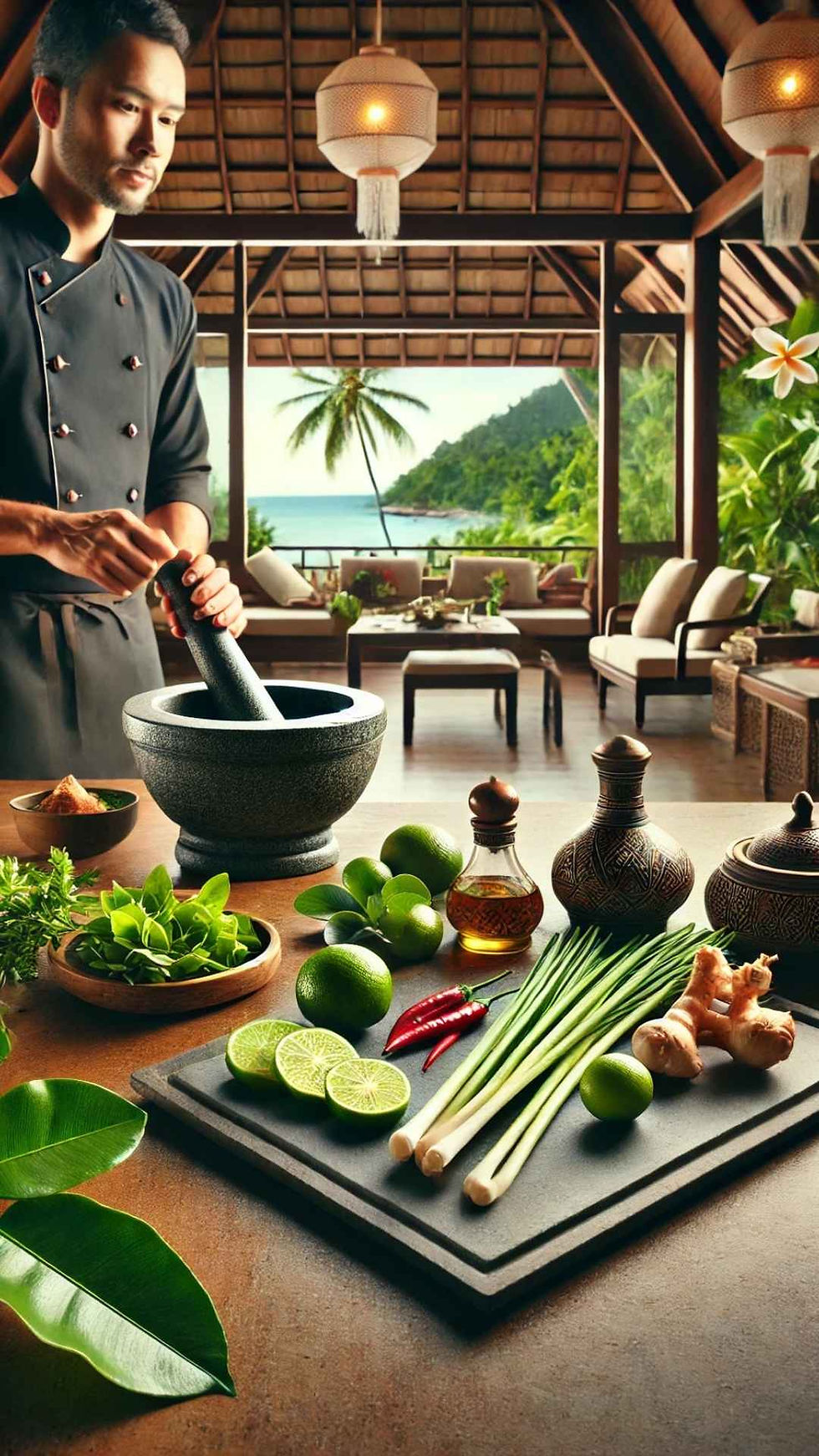Visa DTV Thailand: Why Learning Thai Gastronomy in Thailand Is a Unique Opportunity
- InFusion

- Sep 14
- 2 min read
Updated: Sep 17

Discovering the Real Thai Cuisine
Thai cuisine abroad can be delicious, but it is rarely identical to what you will find in Thailand. The main reasons are simple:
Terroir and ingredients: vegetables, herbs, and rice grown in Thai soil taste different from those cultivated elsewhere. Many fresh ingredients, such as green peppercorns or local herbs, are difficult or impossible to import.
Semi-processed products: in Thai markets you will find fermented vegetables, fresh handmade rice noodles, or fish pastes without preservatives, products rarely available outside Thailand.
Adaptation to local taste: Thai food cooked abroad is often adapted to Western palates, sweeter and less spicy than what you will find in Thailand.
With the Visa DTV Soft Power Thailand, you have the chance not only to stay long-term, but also to experience Thai cuisine as it really is, with unlimited access to authentic ingredients and techniques.
Beyond Pad Thai: A Journey into Regional Cuisines
Most Thai restaurants abroad showcase dishes from the Central Plains, such as green curry, tom yam soup, pad thai. These classics are only a small part of Thai gastronomy.
During a long-term stay in Thailand, you can explore the four main regional cuisines:
Isan (Northeast): rustic, rooted in tradition, famous for green papaya salad, sticky rice, and the powerful fermented fish sauce pla ra.
The North: mountainous, with milder but still spicy dishes, sticky rice as a staple, and unique influences from Myanmar and Laos.
The South: intensely spicy and salty, less sweet, with a strong emphasis on seafood and influences from Muslim and Chinese traditions.
The Central Plains: refined, balanced, and home to royal Thai cuisine. This is the birthplace of the dishes most familiar to foreigners.
Exploring these cuisines is only possible in Thailand, where you have access to the right ingredients and cultural context.
A Structured Culinary Program on Koh Samui -
At InFusion Cooking Classes Koh Samui, we designed a 12-month Thai Culinary Training that perfectly matches the DTV Soft Power visa.
✔️ 12 monthly modules, each with a theme (curries, salads, desserts, regional specialties).
✔️ Market tours, private cooking classes, independent practice, and group activities.
✔️ 60 authentic dishes mastered: 48 during classes, 12 independently with feedback.
✔️ Monthly certificates, detailed syllabus and calendar, official documents delivered within 24h for your visa application.
👉 Discover our 12-Month Thai Cooking Course and see how it strengthens your Visa DTV application.
Options for Shorter Stays
If you cannot commit to a full year, we also offer professional programs of 3 to 6 days, covering 24 to 48 dishes. These intensive courses are designed for chefs, caterers, or passionate amateurs who want to bring authentic Thai recipes into their kitchens.
Conclusion
The Visa DTV Thailand is not just an administrative opportunity, it is a doorway to the heart of Thai gastronomy. By spending a year on Koh Samui, you can go beyond the clichés, discover the richness of regional cuisines, and build authentic culinary skills that will stay with you for life.


Comments